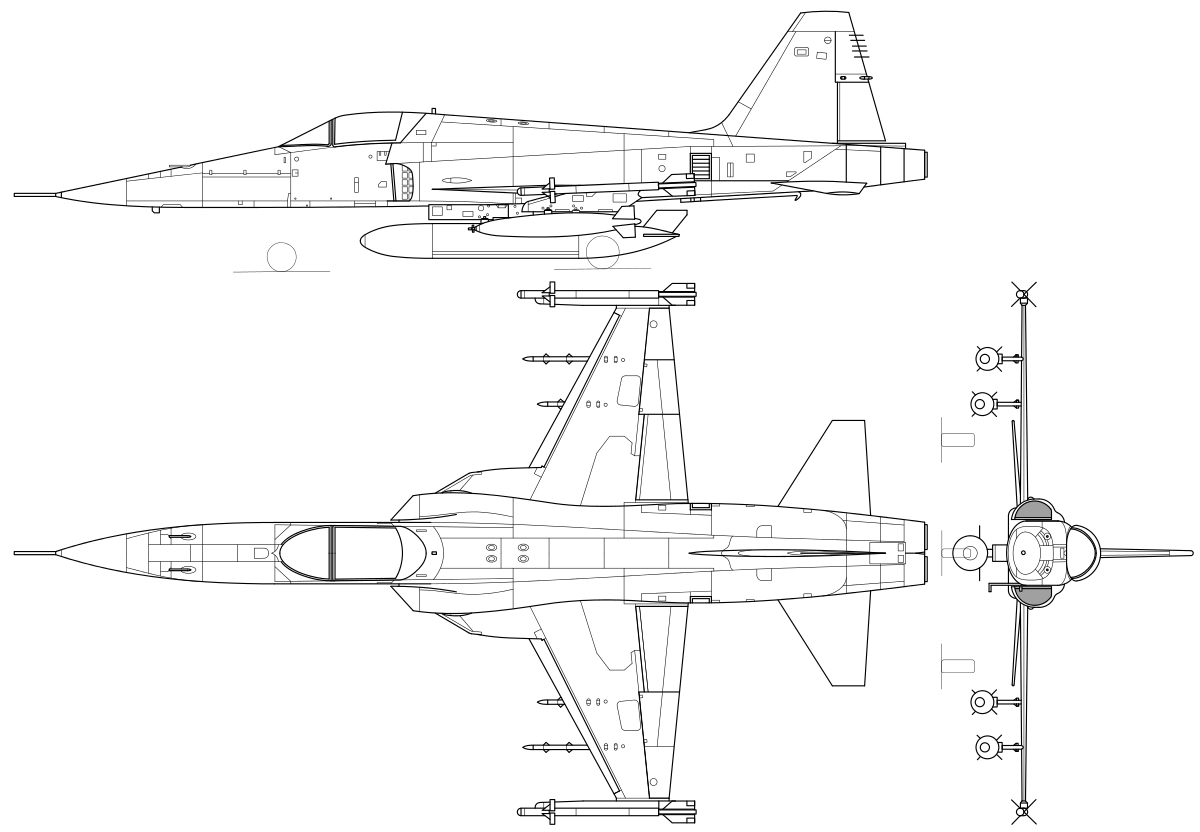A light fighter developed in the mid 1950s, the Tiger is a member of a small number of aircraft developed around similar goals; a lightweight, high speed, and highly maneuverable, supersonic aircraft.
Built off the successful F-5A platform, the more powerful F-5E included improved avionics, air-to-air fire control radar system, and enhanced weapons capabilities. The F-5E made its initial flight in 1972 and served during the Vietnam War. The F-5E was most well-known for simulating MiG-21s for training in aerial combat skills and Soviet tactics at Nellis Air Force Base, Nevada.

Serial Number: 73-01640
Manufacturer: Northrop Corporation
Crew: One
Engines: Two General Electric J85-GE-21 turbojets; 5,000 pounds thrust each with afterburner
Wingspan: 26 feet 8 inches
Length: 48 feet 2 inches
Height: 13 feet 4 inches
Weight: 24,675 pounds (maximum)
Speed: 1,050 mph (Mach 1.63)
Range: 2,300 miles (with external fuel tanks)
Service Ceiling: 50,700 feet
Armament: Two M-39 20mm cannons; rockets, missiles and 5,500-pound bombs loaded externally
Cost: $756,000
Over the years, the Ogden Air Logistics Center supported Foreign Military Sales (FMS) of undergraduate pilot trainers and visual systems; among them were F-5 trainers. The F-5E on display was originally a Northrop test/chase jet that served at bases in California and Arizona in the 1970s. Hill Aerospace Museum acquired this aircraft for display, and it was painted to closely resemble the F-5Es flown by the United States Air Force (USAF) Aggressor Squadrons at Nellis Air Force Base, Nevada.
A light fighter developed in the mid 1950s, the Tiger is a member of a small number of aircraft developed around similar goals; a lightweight, high speed, and highly maneuverable, supersonic aircraft.
The Tiger is considered a very successful aircraft for the roles it provides and for its capabilities as a lightweight fighter. It especially excels in use by the U.S. Navy as an aggressor aircraft, standing in for foreign air forces to help train American TOPGUN pilots.
Approximately 17 F-5Es were eventually deployed for combat in the sky over North Vietnam. Though nine would eventually be lost, the aircraft was deemed an overall success for its deployment.
As the F-5 was ultimately not intended for widespread use within the U.S., outside of training exercises, the F-5 is still in use by the Navy and Marine Corps.